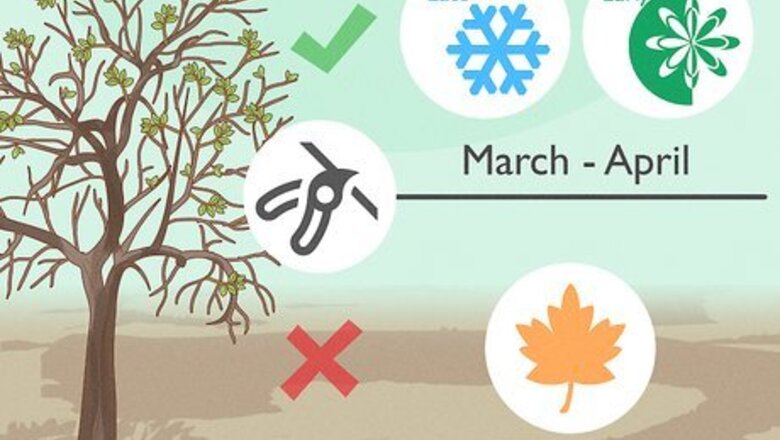
views
- Prune your trees in March or April to avoid damaging branches or impeding growth.
- Shape young trees into pyramids, with 4-6 thick, primary branches emerging from the trunk.
- Routinely cut away dead or damaged wood, as well as any branches growing vertically or downward.
- Thin out the fruiting buds so that they’re about 6 in (15 cm) apart, and only contain 1 fruit per bud.
Timing and Tools
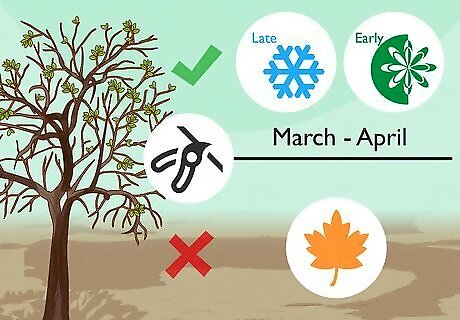
Prune in late winter or early spring. Get clipping after the last frost, but before your tree starts sprouting new growth (about March through April, in most places where apple trees grow). Trimming too early might weaken your tree during the coldest months. Pruning too late might damage it when it’s trying hardest to grow. If you miss this window, perform a light prune in late July or August. Avoid pruning in the fall, since any new growth will die off come winter.
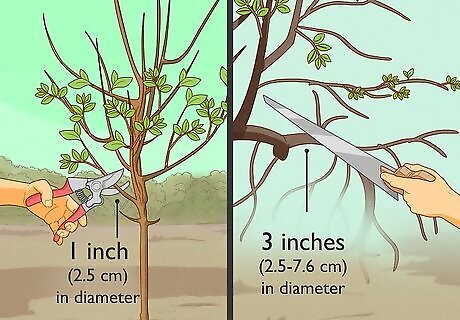
Use pruning shears for small cuts, and a garden saw for large cuts. For limbs smaller than about 1 in (2.5 cm) in diameter, use hand pruners. Use lopping shears for branches that are about 1–3 in (2.5–7.6 cm). Use a pruning saw to cut any branches wider than 3 in (7.6 cm). Using a tool that’s too small for the job can damage the branch. Using one that’s too large might result in clumsy, improper cuts. Before and after pruning, disinfect your garden tools with isopropyl alcohol to prevent spreading diseases to the tree.
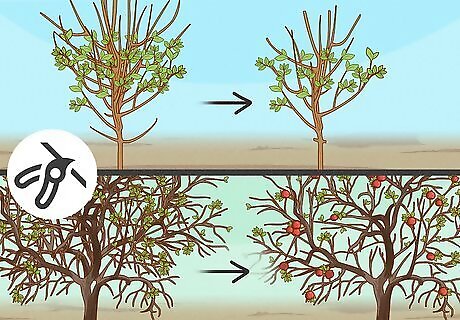
Prune young trees to shape them, and older trees to encourage fruiting. Trees younger than 3 years aren’t in their prime fruiting days, so prune them more heavily to encourage strong structure. Trim mature trees sparingly to make sure their energy goes into producing fruit, rather than upward growth. Generally, apple trees shouldn’t be great shade trees. If you would comfortably sit under your apple tree to shelter from the sun, it’s time to prune!
Training a Young Tree

Shape your tree into a cone to encourage healthy growth. As you cut, aim for a pyramidal shape, with a narrow top and a wide base. This shape allows for sunlight to fall evenly through the canopy. It also promotes stronger, healthier limbs and generous fruiting.

Lop off any competing leading branches. The leading branches are the center, vertical branches that emerge from the trunk. Generally, an apple tree should only have a single, stocky leading branch to pioneer upward growth. If this branch forks, select the fork that’s thickest and most upright, and cut away the other.
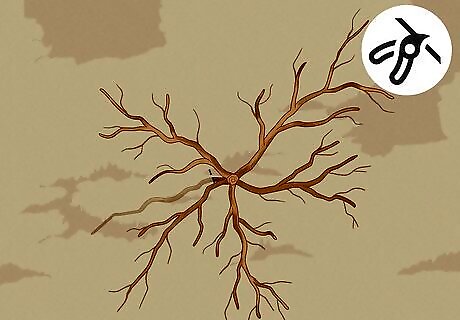
Preserve 4-6 primary scaffold branches for the best structure. Scaffold branches are the thick, primary branches that jut from the center leading branch. Typically, a well-pruned apple tree has 4-6 scaffold branches, which grow in 2-3 tiers. Select 3-4 well-spaced (about 10 in (25 cm) apart), strong scaffold branches in your young tree, and cut the rest off at the base. Opt for scaffold branches growing at 45- to 60-degree angles from the trunk to encourage outward growth. Let the tree grow 2-3 new scaffold branches each year until maturity, maxing out at 6 total scaffold branches after about 5 years. Seen from an aerial view, the scaffold branches of the tree will ideally look similar to a star or the spokes on a wheel.
Pruning a Mature Tree

Prune off any shoots growing from the base of the tree. Suckers are the unwanted shoots that grow near the bottom of the trunk. Remove all of these shoots up to the base of the main canopy of the tree to encourage a good shape. Suckers aren’t much good for growing fruit. If unchecked, they’ll crowd out other limbs and use up valuable energy.
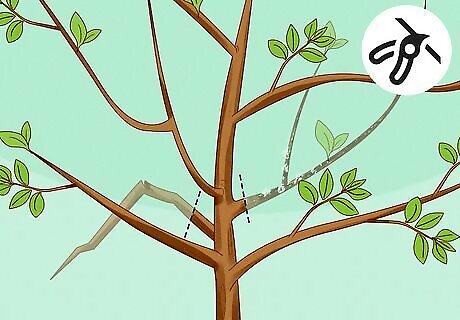
Cut off any broken, dead, or diseased wood. If a branch is withered, discolored, or has snapped under any sort of stress, go ahead and lop it off. Remove the entire branch if it doesn't have any buds. If it does have buds towards the base of the branch, make a cut just above the last healthy bud on the branch. Remove these branches at any time of year, as soon as you notice them When cutting branches with buds, cut at an angle about 0.25 in (0.64 cm) above a bud that faces away from the trunk of the tree. This encourages healthy, new growth.
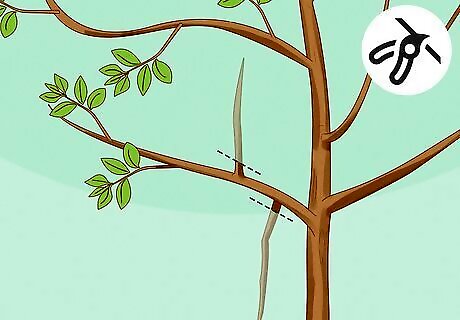
Cut off any watersprouts and downward-growing branches. Prune away and branches growing downward, since these won’t be able to bear significant fruit. In addition, trim away any sprouts growing straight up from the branches (known as “watersprouts”), which divert energy from fruit-bearing limbs. Cutting away entire branches in this manner is known as “thinning.”

Prune down crowded branch nodes. “Whorls” are locations in which 3 or more small branches originate from the same location, and are especially common in more mature trees. Because so many limbs are growing from the same place, the branch is weaker and unable to support the branches as they grow. Cut away all but the thickest, strongest shoot. Also cut away the smaller branches in any areas where branches are touching or overlapping.

Shorten the remaining branches. Cut back the rest of the branches by about 1/3 of their length to encourage the stems to thicken and develop flowers the following season. Make each cut just above an outward facing bud to encourage a healthy shape.
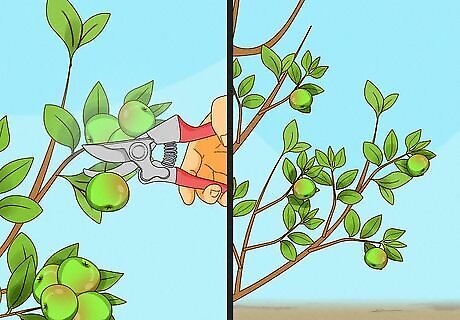
Pluck young fruits to thin out the clusters. Apple trees tend to grow more fruit than they can reasonably produce. Once your tree is fruiting, remove young fruits by hand, so that there’s only 1 fruit per cluster of buds. Also remove fruits so that each is about 6 in (15 cm) away from the next fruit on the branch. This helps the tree grow large, healthy apples, rather than an abundance of smaller, less preferable fruit.



















Comments
0 comment